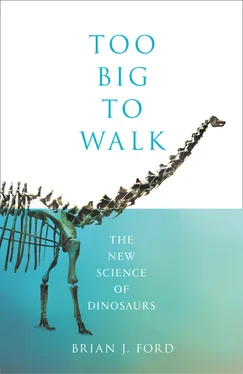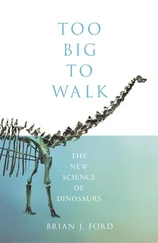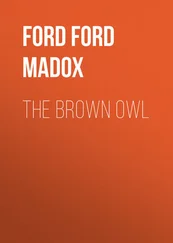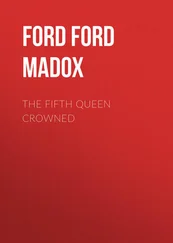By the mid-1840s Mary Anning began to acquire a new reputation – her behaviour was changing, and the local people thought she was becoming an alcoholic. They were wrong: she had developed cancer of the breast. To keep the pain under control she drank increasing amounts of laudanum, a solution of opium, which caused her slurred speech and unsteadiness. When the news of her illness spread, the Geological Society of London launched a fund to help with her expenses, and the new Dorset County Museum appointed her an honorary member. In 1847 Anning died, and members of the Geological Society donated money for a stained-glass window in her memory, which was unveiled in St Michael’s parish church in Lyme Regis in 1850. An inscription nearby says:
This window is sacred to the memory of Mary Anning of this parish, who died 9 March AD 1847 and is erected by the vicar and some members of the Geological Society of London in commemoration of her usefulness in furthering the science of geology, as also of her benevolence of heart and integrity of life.
It was a rare distinction, and so richly deserved. Henry de la Beche, president of the Geological Society of London, delivered a eulogy that was published in the society’s Transactions . No other woman scientist had been similarly commemorated; indeed, the Society did not admit women members until 1904. The president began: ‘I cannot close this notice of our losses by death without adverting to that of one, who though not placed among even the easier classes of society, but one who had to earn her daily bread by her labour, yet contributed by her talents and untiring researches in no small degree to our knowledge of the great Enalio-Saurians, and other forms of organic life entombed in the vicinity of Lyme Regis.’ The eminent Charles Dickens dedicated an article to her in his literary magazine All the Year Round , ending with this tribute: ‘The carpenter’s daughter has won a name for herself, and has deserved to win it.’ More than any other single individual, it was she who launched the study of those curious prehistoric reptiles. Mary Anning was the first full-time professional palæontologist anywhere in the world.
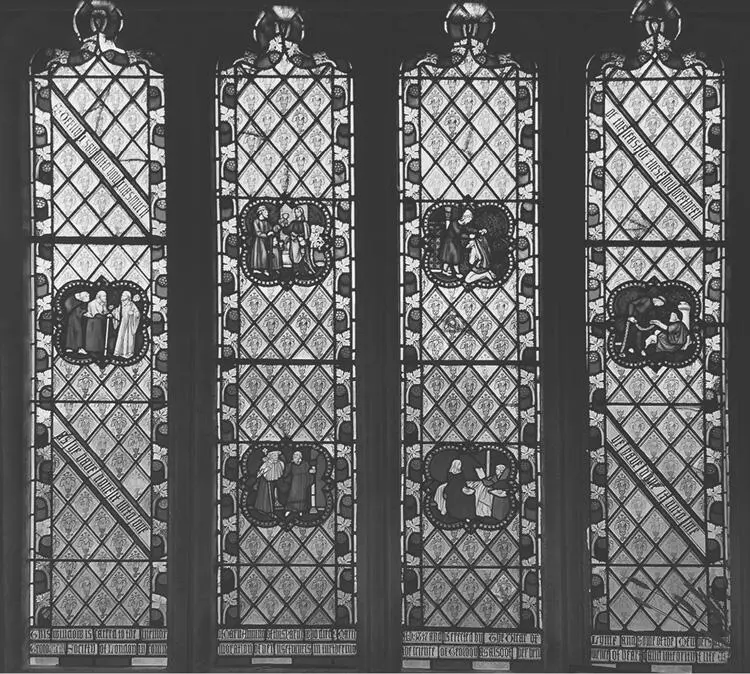
To commemorate Mary Anning’s lifetime of devotion to studying and collecting fossils, in 1850 the Geological Society of London funded this stained-glass window for St. Michael’s Church, Lyme Regis, showing six religious acts of mercy.
Since the start of the nineteenth century, natural philosophy had become a common currency for the public. Amateur investigators were everywhere, and collecting curiosities was the perfect pastime for those with social aspirations. The enlightenment had percolated through society, and a new sense of rational thought was replacing traditional superstition. Yet in modern terms, scientific understanding was limited. The term ‘scientist’ did not exist; that term was not coined until 1834 when William Whewell, a philosopher polymath at Cambridge University, introduced it. Although the existence of now-extinct life forms was widely accepted, there was no understanding of the mechanisms for extinction. Humans were held to be a uniquely gifted form of life, though I have shown elsewhere that a single plant cell can detect stimuli similar to those we know through the classical five senses (sight, hearing, taste, smell and touch). Humans are optimized, but not unique.39
As knowledge expanded, the evidence unearthed by geologists was still interpreted in biblical terms. Gravel beds, for instance, simply proved the flood as described in the Old Testament. There was no formal association for oryctologists (as fossil enthusiasts were still known), and most of the fossils in collections were shells and isolated vertebræ. Most wealthy collectors purchased their specimens. Although they enjoyed wandering out and about in nature, picking up items of interest, most lacked the acute levels of perception to identify what was important. Naturalists know that a collector must ‘get their eye in’, and most fossil enthusiasts were armchair amateurs who found it easier just to buy what they could.
The science of geology was given a boost by the work of an uneducated genius, the son of an Oxfordshire blacksmith. This was William Smith, who became a surveyor and worked on the construction of canals and coal mines across the country. This is when he noticed how the same strata cropped up in disparate parts of Britain, and eventually he collected all his observations together to create the first geological map of the whole of Britain. Because he was of working-class origins he was widely dismissed by educated society; he spent time in a debtor’s prison and his work was extensively plagiarized. Eventually, however, his conclusions were published in 1815 as a vast and detailed map, 8 feet 6 inches (2.6 metres) long, the first detailed geological map of an entire country produced anywhere. It was an astonishing achievement. Smith’s conviction that rocks could be systematically studied arose from his awareness of the increasing interest in fossils. Whereas most people regarded them as objects of curiosity, Smith saw them as indicators of a hidden reality – the key to unravelling the strata on which Britain was built. Smith had clear sight and a methodical mind, and created lyrical literature. In 1796, he wrote this prescient prose:
Fossils have been long studied as great curiosities, collected with great pains, treasured with great care and at a great expense, and shown and admired with as much pleasure as a child’s hobby-horse is shown and admired by himself and his playfellows, because it is pretty; and this has been done by thousands who have never paid the least regard to that wonderful order and regularity with which nature has disposed of these singular productions, and assigned to each class its peculiar stratum.
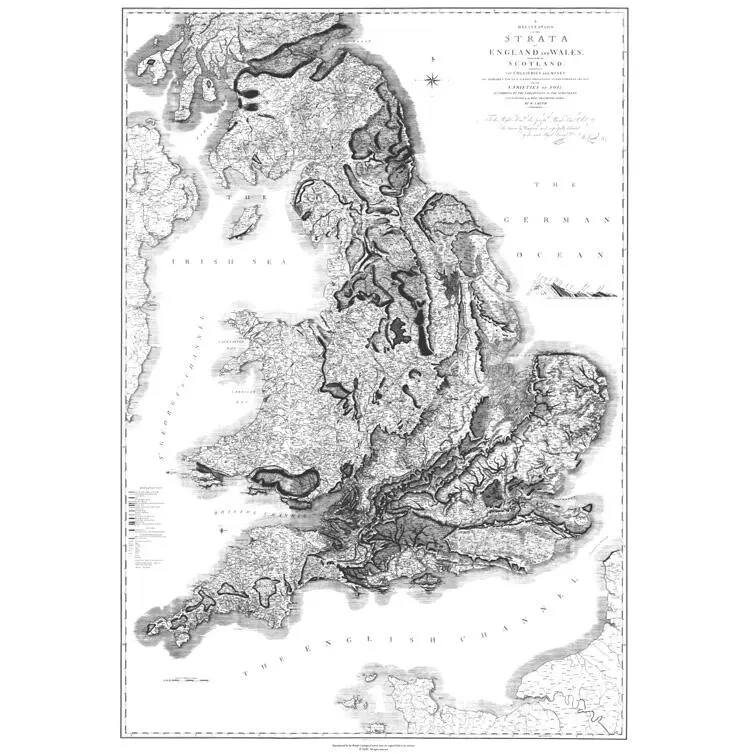
The first geological map of Britain was published by William Smith, a self-educated surveyor, in 1815. It was over 8 feet (2.6 metres) long and was based on an outline map by John Cary. This was the first geological map to cover such a large area.
Smith fell into debt whan an agreement to provide stone for a customer could not be fulfilled. He raised £700 by selling his fossil collection to the British Museum but was confined in the debtor’s prison for the remaining £300. After his release in 1819 he worked as surveyor for Sir John Johnstone, who soon appointed him land steward to the family estate in Hackness near Scarborough. Johnstone was astonished at Smith’s knowledge, and encouraged him to design the Rotunda, a display of the geology of the Yorkshire coast with strata all shown in their correct order in curved cases. This remarkable building survives to the present day, and is the oldest geological museum anywhere in the world.
Gideon Mantell was also conversant with Smith’s map, and Mantell entered into deep discussions with others interested in rocks. For instance, he became friendly with a mining engineer named John Hawkins who was similarly interested in the strata that surrounded them. Other friends were George Bellas Greenough, who was working towards his own map of Britain’s rocky strata, and James Sowerby, who encouraged the young Mantell to publish a book that would extend and refine the results for Sussex published in William Smith’s pioneering map.
The year 1816 was a crucial watershed for Mantell. He married Mary Ann Woodhouse, a talented young artist, and took on a new post as surgeon at the Royal Artillery Hospital in nearby Ringmer, Sussex. He also published his first scholarly work that year, a book on the minerals in the area around Lewes. Next, he published a magazine article on the rocky strata of southeast Sussex. By this time he was starting to become prominent among the fossil hunters. When Colonel Thomas James Birch decided to auction his entire fossil collection for the benefit of Mary Anning, it was to Mantell that he wrote in March 1820, saying: ‘The sale is for the benefit of the poor woman and her son and daughter at Lyme, who have in truth found almost all the fine things which have been submitted to scientific investigation. I may never again possess what I am about to part with, yet in doing it I shall have the satisfaction of knowing that the money will be well applied.’
Читать дальше
